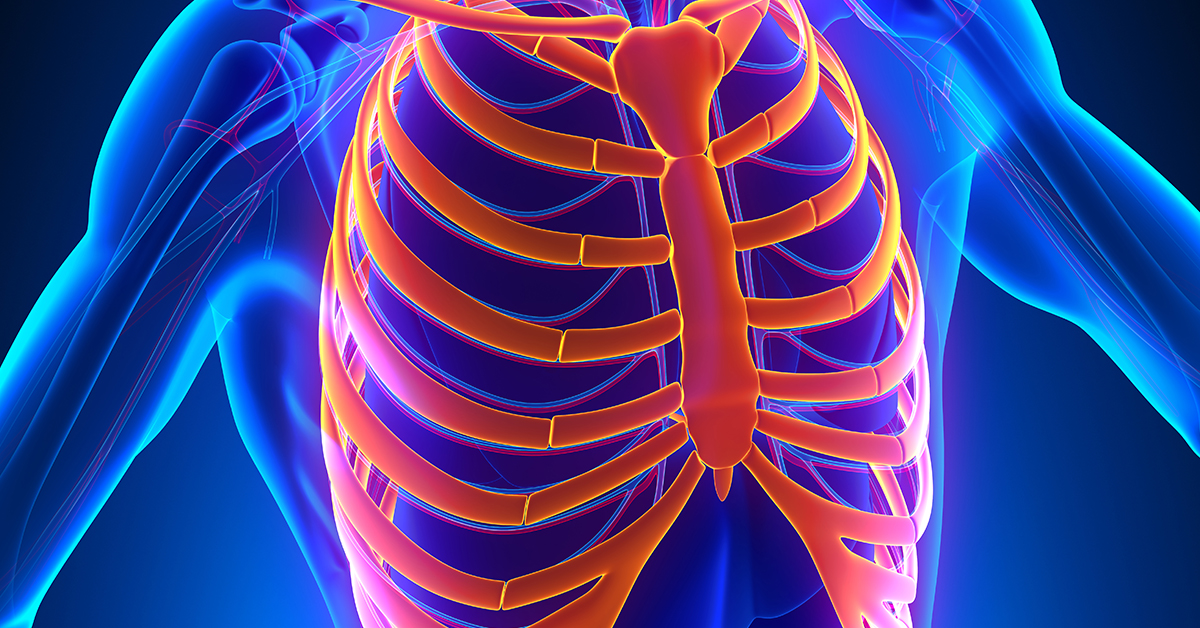
The thorax is composed of ribs, the sternum (breast bone), cartilaginous tissue and the vertebral column. At the junction of the ribs with the breast bone is cartilage that can sometimes become inflamed and painful. This condition is known as costochondritis. In this article, we shall briefly review this condition and talk about how it can be managed.
What is Costochondritis?
Costochondritis is a painful condition that is characterized by inflammation of the cartilage that joins the ribs and the breast bone.
The word 'costo' means ribs and 'chondritis' means 'inflammation of cartilage.' Costochondritis can affect any rib and any cartilaginous joint. In costochondritis, there does not appear to be any swelling of the cartilage, which is important to note, as this can be easily confused with another clinical condition known as Tietze's syndrome.
Causes of Costochondritis
The majority of cases of costochondritis do not have a clear cause. Sometimes, however, in patients who have suffered some form of chest wall injury, pain may occur. This can be due to direct trauma to the chest or from strenuous activities such as lifting heavy weights.
Costochondritis tends to affect younger individuals rather than older individuals. There does not appear to be any predilection toward men or women, but anecdotal reports have suggested that it may be more common in women.
Symptoms of Costochondritis
The characteristic symptom experienced by patients is a sharp chest pain which is felt in the front of the chest where the cartilage is present. The pain can be exaggerated upon movement and when taking a deep breath in. Upon pressing the affected area, patients can replicate the pain. Unlike cardiac pain, the pain from costochondritis is localized to one area and does not radiate anywhere else (like to the jaw or the shoulder).
Due to the pain, some patients may experience a degree of breathlessness, as they are unable take a deep breath in. Clinical examination clearly demonstrates tenderness over the costochondral junctions, that is, the junction where the ribs meet the breast bone.
Diagnosis of Costochondritis
There is no specific diagnostic tool that can be used in confirming costochondritis and clinical examination is often sufficient.
However, given the location of the pain, patients may undergo additional investigation such as an electrocardiogram to rule out a cardiac cause of chest pain. A chest X-ray may also be performed to rule out the presence of any fractures.
Treatment for Costochondritis
The primary modality of treatment for costochondritis is painkillers. Simple over-the-counter painkillers such as paracetamol are often sufficient. Non-steroidal anti-inflammatory drugs such as ibuprofen are excellent in managing the pain. Patients are also advised to avoid any sudden movements or activities that can worsen the pain and place stress on the costochondral junctions. In addition to painkillers, patients must also try simple home remedies such as applying heat pads on the affected area or seek out alternative treatments such as acupuncture.
In cases where patients experience intractable chest pain, specialist treatments such as intercostal nerve blocks using anesthetic agents may be performed. The techniques may help though further treatments may be required.
The majority of cases of costochondritis resolve within a few weeks and the long-term prognosis is excellent.




